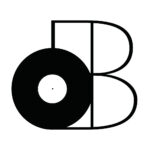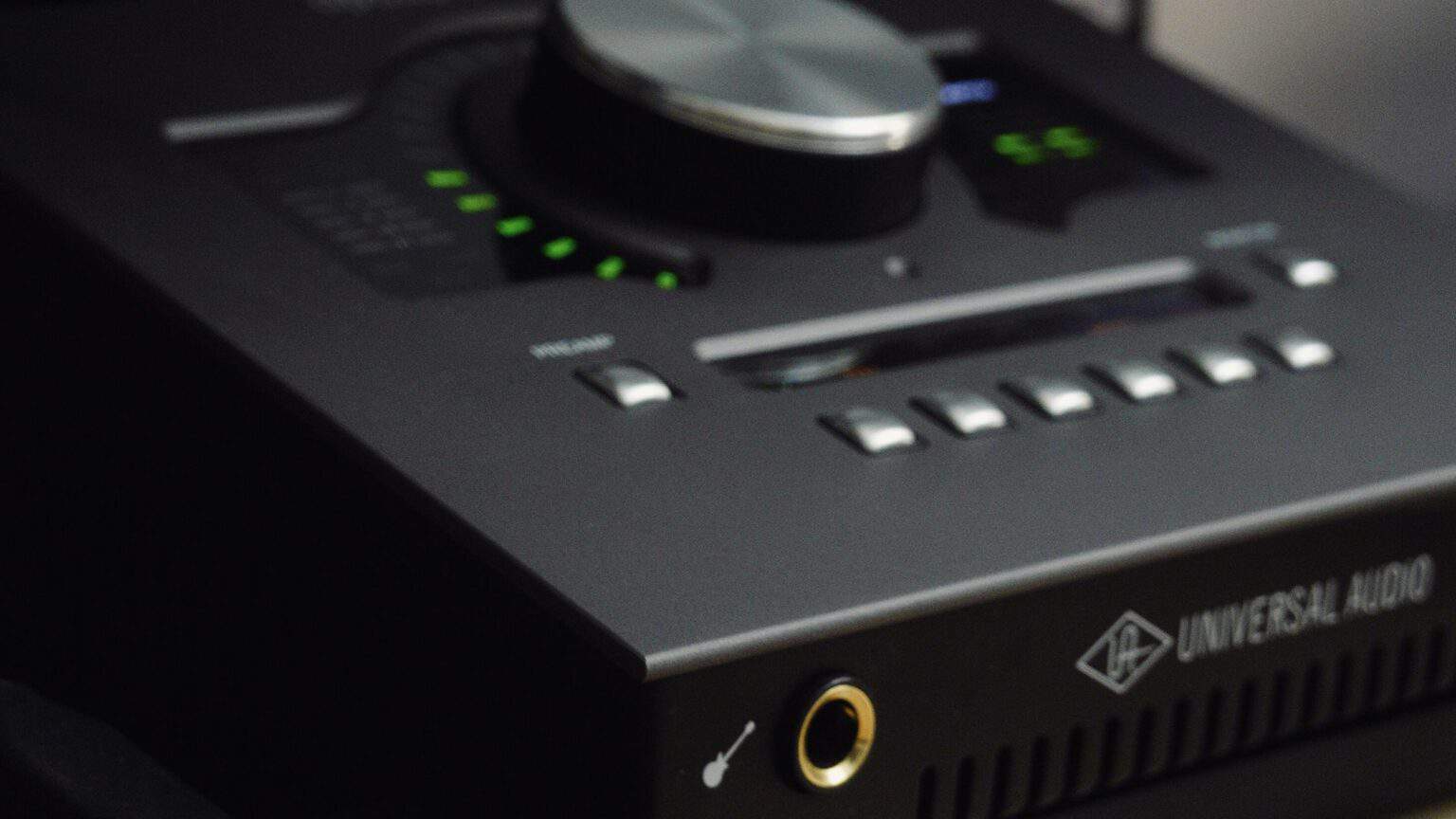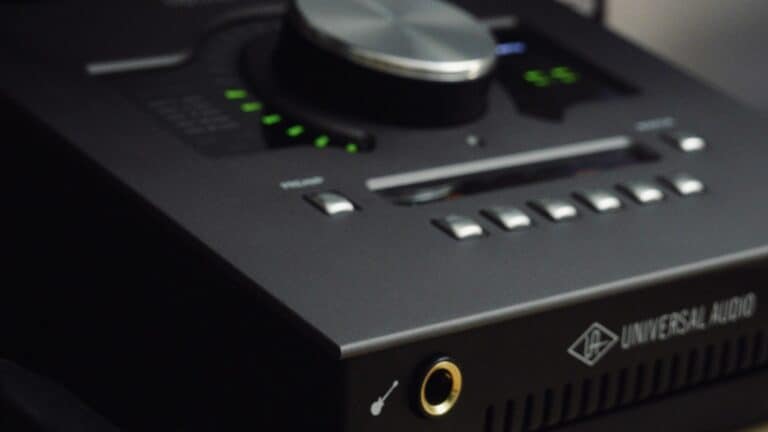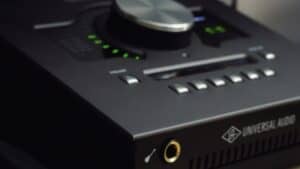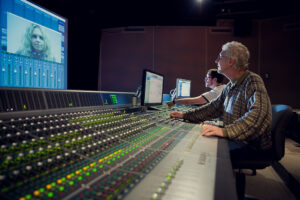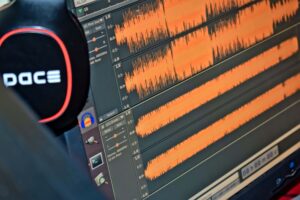If you’re wondering which audio interface has the best preamps, you most likely haven’t heard of Universal Audio’s Unison-enabled preamps. Of course, we’re talking about something pretty subjective here, but it’s not just about the sound quality. Unison-enabled preamps are completely unique and they’re currently revolutionizing the industry.
So, which audio interface has the best preamps anyway? Today, we’ll be talking about Universal Audio’s Unison-enabled preamps. Most of their audio interfaces are equipped with this revolutionary technology, but it does much more than make them sound good. Unison-enabled preamps can communicate directly with select Universal Audio plugins. What does that mean for us? Keep reading to find out exactly why Unison-enabled Universal Audio devices have the best preamps and how they can revolutionize your home recording studio for the better!
- Bridging the gap between the analog/digital with Unison preamps
- Universal Audio’s Unison-enabled preamps are the best because of Unison-enabled UAD plugins
- Universal Audio’s Unison-enabled preamps are the best because of their impedance matching
- Universal Audio’s Unison-enabled preamps are the best because of their gain-staging “sweet spots”
- Universal Audio’s Unison-enabled preamps are the best because of their circuit behaviour emulation
- Which Universal Audio interfaces have Unison-enabled preamps?
Bridging the gap between analog/digital with Unison preamps
The first thing you need to understand about Universal Audio is their mission. Instead of simply manufacturing audio interfaces, they’ve completely re-imagined what the audio interface is capable of and succeeded.
The gap between analog/digital technologies is getting smaller thanks to them.
Now, you’ve most likely heard of analog modelled plugins. However, I personally guarantee that none of those plugins include hardware that can truly create that “analog” sound. That’s where Universal Audio’s Unison-enabled preamps are changing the scene.
In short, Unison-enabled preamps…
- Adjust their input impedance to match the plugin’s input impedance
- Recreate the gain-staging “sweet spots” of each UAD plugin
- Emulate the circuit behaviour of each analog modelled plugin
If that sounds like gibberish, I’ll be elaborating on all these points in the following sections.
However, there are two things that should be pretty clear. First of all, there aren’t many audio interface manufacturers that design their own plugins. Secondly, there aren’t many plugin designers that manufacture their own audio interfaces.
That’s where Universal Audio has the edge over the rest of the competition.
Does that mean you need to use UAD plugins to take advantage of Unison-enabled preamps?
Universal Audio’s Unison-enabled preamps are the best because of Unison-enabled UAD plugins
Of course, you’ll need to use Universal Audio plugins to take advantage of your preamps. Unison technology was designed to push the boundaries of analog modelled plugins by making them behave like the real thing.
However, you don’t need to run every plugin into Unison-enabled preamps.
Actually, it’s only possible to run one Unison-enabled plugin per channel.
For example, you may want to record your bass guitar through Universal Audio’s Ampeg SVTVR Classic (model of the Ampeg SVT Pro). Inserting that plugin into your Unison-enabled preamp causes your UAD audio interface to “transform” into that plugin.
In other words, the Unison-enabled preamp takes on the characteristics of that plugin.
That’s why Unison is so revolutionary. It’s never been done before.
The first effect in your signal chain will be the Unison-enabled plugin. That means that everything after that first gain-stage happens on the inside. That’s why we only need our first plugin to be Unison-enabled. Everything after that sounds 100% better.
So, you can already see the potential for guitar/bass players.
It’s the same for every other instrument, but having amp modelling plugins that sound AND feel like an actual tube-powered amplifier is surreal. Any instrument plugged into those Unison-enabled preamps will be optimized and sound at its best.
Universal Audio’s Unison-enabled preamps are the best because of their impedance matching
We’re now getting into the technical elements of Unison technology. I just finished mentioning that guitarists/bassists would benefit most from Unison-enabled preamps, but it’s not just them.
However, guitar/bass players will most likely be familiar with the term “impedance matching”.
It’s the main reason we use DI boxes in the studio/on-stage. The high-output (high-impedance) signal from these instruments isn’t compatible with most audio interfaces. Actually, most audio interfaces now include “HI-Z” (high-impedance) inputs to compensate.
So, no more DI boxes. Right?
It really depends because DI boxes are more than just tools. DI boxes can actually contribute to your overall sound because of the different possibilities (components, impedance, etc…). Controlling these variables would make it much easier to control your end-product.
Unison-enabled preamps accomplish all of this automatically.
Instead of testing different DI boxes, Unison-enabled preamps find your perfect sound.
So, which audio interface has the best preamps? It’s the audio interface that has preamps that basically include some sort of internal DI box that can modify its impedance. That’s what Unison-enabled preamps are by my understanding.
It’s similar to the Radial PZ-DI which has the ability to alternate between different impedances.
Bottom-line, it makes the recording process effortless. Everything sounds perfect whether you’re using active/passive electronics and it’s all relative to the plugin you’ve chosen. I’m telling you, I’ve never heard anything quite like it.
Universal Audio’s Unison-enabled preamps are the best because of their gain-staging “sweet spots”
One of the most interesting aspects of Unison technology is the ability to achieve that tube-saturation without needing to crank up the volume. Tube-powered amplifiers are dependent on gain-staging (unlike solid-state amplifiers).
That’s why attenuators were used in amplifiers; to lower the output.
Universal Audio’s Unison-enabled preamps use the same concept, but on another level.
Regardless of the volume/gain, you’ll be getting the best sound possible from your plugin. Some presets are fixed to one level, but most of the presets I’ve used sound different at each level. In other words, each level has been adjusted to its gain-staging “sweet spot”.
The only thing you’ll ever need to worry about is your input gain. That means adjusting the master volume knob on your instrument and/or using the -15 dB “pad” (attenuator) that’s included on each channel of your UAD audio interface.
So, we’re working with preamps that take care of all the hard work for you.
Having Unison-enabled preamps is like having your own personal sound engineer.
It just really helps when the only thing you want to do is record. When you’re inspired, you don’t always have the time to “dial in” that perfect sound. By using Unison-enabled preamps, every preset will sound its best at all times.
Universal Audio’s Unison-enabled preamps are the best because of their circuit behaviour emulation
The last advantage of Unison-enabled preamps is the so-called “component-level circuit behaviour” emulation. It basically means that your Universal Audio interface will emulate the circuitry used in the selected analog modelled plugin.
That’s why effects pedals (even the same effect) sound different.
Since each manufacturer creates their own “signature” sound, it becomes quite difficult to replicate especially when we’re using plugins. Universal Audio took analog modelling one step further by focusing on the unique characteristics that make each device unique.
I admit that this last component is the most abstract of the three.
Even I don’t fully understand how it works.
In theory, the Unison-enabled preamp should emulate the circuit schematic of the analog model. That means that the analog signal will somehow be altered before it reaches the digital-to-analog converter (DAC).
This means that your signal would actually be different depending on whether you used the Ampeg SVTVR or the Friedman BE100 (both available as UAD plugins).
I believe this impacts more how the track “feels” rather than how it actually sounds. Remember, Unison’s main feature is the ability to make digital plugins feel like you’re playing through the real thing. Just think of it as VR for musicians!
Which Universal Audio interfaces have Unison-enabled preamps?
If you’re still wondering which audio interface has the best preamps, I encourage you to start trying some of the audio interfaces I’ll be recommending. Of course, Unison technology is exclusive to Universal Audio, but they have many different products.
I also encourage you to learn more about their products.
You can start by reading my article entitled “are Universal Audio interfaces worth it”.
Other than the three features we’ve talked about today, preamps are still pretty subjective. The actual sound you’re looking for won’t necessarily be fulfilled by these Unison-enabled preamps.
Most of the UAD audio interfaces sound “vintage”, but the newer models sound more “modern”.
It’s really a matter of personal preference, but I’m personally hooked. Universal Audio represents everything I stand for as a musician and the Unison-enabled preamps are what make the impossible possible!
You can also check out this article if you’re wondering which Universal Audio interfaces have Unison-enabled preamps. You’ll also find your perfect match!
On that note, I’ll be leaving you with these resources. I encourage you to keep doing your research, but I just hope that you’ll consider working with Unison-enabled preamps. I’m going to be using them for the rest of my career, so you’ll be hearing them on all my recordings.
Which audio interface has the best preamps? I personally believe it’s Universal Audio. If you had never heard of Unison-enabled preamps, I’m glad that you’re now aware of their existence. I personally work with the Universal Audio Arrow and always use UAD plugins on my guitar/bass tracks, so I can vouch for the quality. However, you’ll need to find the sound you’re looking for and that’s personal. If you ever need some guidance though, you can always leave me a comment! Also, don’t forget to grab a copy of my free ebook!
Sources:
https://www.uaudio.com/blog/unison-quick-tip/
https://www.sweetwater.com/insync/how-to-use-ua-unison-preampamp-models/

